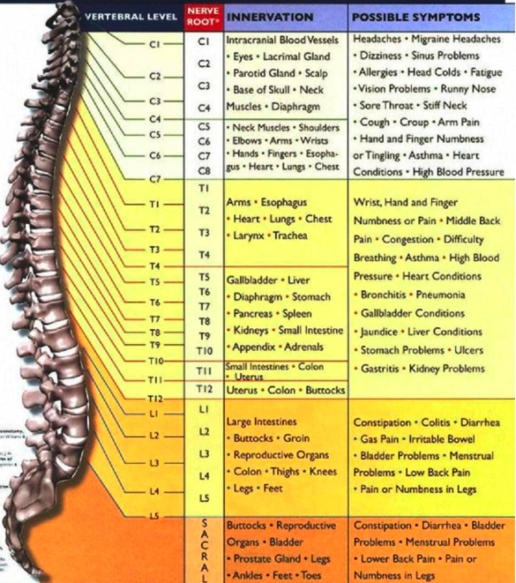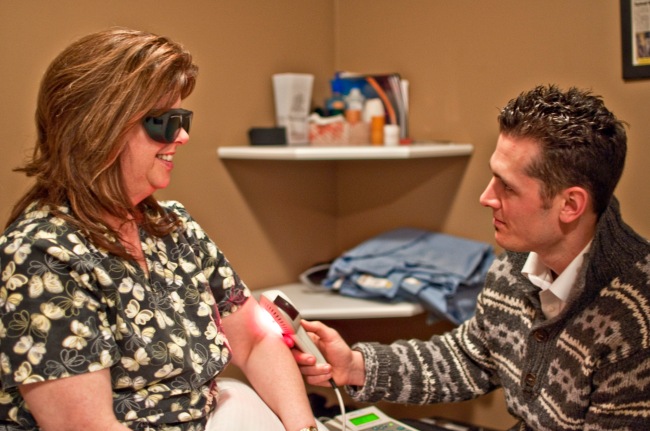Coronary heart disease
Evidence suggests that people who have low levels of EPA and DHA may have an increased risk of developing acute coronary syndrome (ACS) (a type of heart disease). Clinical trials suggest that supplementation with omega-3 fatty acids has positive benefits in terms of reduced cardiovascular disease mortality and total mortality. |
A |
Hyperlipidemia (triglyceride lowering)
There is strong scientific evidence from human trials that omega-3 fatty acids from fish or fish oil supplements (EPA plus DHA) significantly reduce blood triglyceride levels. Benefits appear to be dose-dependent. Fish oil supplements also appear to cause small improvements in high-density lipoprotein (HDL, or “good”) cholesterol. However, increases in (worsening of) low-density lipoprotein (LDL, or “bad”) cholesterol levels have also been observed. It is not clear if alpha-linolenic acid significantly affects triglyceride levels, and there is conflicting evidence in this area. The American Heart Association has published recommendations for EPA plus DHA. Because of the risk of bleeding from omega-3 fatty acids, a qualified healthcare provider should be consulted prior to starting treatment with supplements. |
A |
Hypertension
Multiple human trials have reported small reductions in blood pressure with intake of omega-3 fatty acids. DHA may have greater benefits than EPA. However, high daily intakes of omega-3 fatty acids may be necessary to obtain clinically relevant effects, and at high dose levels, there is an increased risk of bleeding. Therefore, a qualified healthcare provider should be consulted prior to starting treatment with supplements. |
A |
Rheumatoid arthritis (fish oil)
Multiple randomized controlled trials have reported improvements in morning stiffness and joint tenderness with the regular intake of fish oil supplements for up to three months. Benefits have been reported as additive with anti-inflammatory medications such as NSAIDs (like ibuprofen or aspirin). Effects beyond three months of treatment have not been well evaluated. |
A |
Secondary cardiovascular disease prevention (fish oil/EPA plus DHA)
Several well-conducted randomized controlled trials have reported that in people with a history of heart attack, regular consumption of oily fish or fish oil or omega-3 supplements reduces the risk of nonfatal heart attack, fatal heart attack, sudden death, and all-cause mortality (death due to any cause). Most patients in these studies were also using conventional heart drugs, suggesting that the benefits of fish oils may add to the effects of other therapies. |
A |
Acute respiratory distress syndrome
Initial clinical evidence suggests that fish oil in combination with gamma-linolenic acid decreases the severity and duration of adult respiratory distress syndrome. Further clinical research is required to confirm this finding. |
C |
Age-related macular degeneration
Population evidence suggests that a diet high in omega-3 polyunsaturated fat may decrease the risk of macular degeneration. A randomized trial of the combination product Photorop, which contains a combination of acetyl-L-carnitine, omega-3 fatty acids, and coenzyme Q10, showed improvement with treatment compared to control patients. Also, the omega-3 fatty acid DHA was found to cause central increases of macular pigment optical density in nonsmoking older women. This may be promising initial evidence of benefit, but additional, well-designed clinical trials are required before a conclusion can be made. |
C |
Aggression
Initial clinical research suggests that fish oil may reduce the development of stress-related aggression and may help regulate mood and impulse control. Additional research is required to further evaluate this effect. |
C |
AIDS/HIV
Clinical studies of fish oil in combination with arginine or other nutritional supplementation in patients with HIV have found conflicting results on immunologic function and body composition. Additional, large-scale clinical trials are needed to further evaluate the use of fish oil in this population. |
C |
Allergies
Population research suggests a reduced risk of child eczema associated with fish consumption of once per week or more. However, the associations between maternal fish in the diet and eczema at two years were insignificant. Maternal supplementation decreased the risk of food allergy and IgE-associated eczema in the first year. Further research is required to determine the effect of omega-3 fatty acids on other symptoms of allergy. |
C |
Angina pectoris
Preliminary studies have reported reductions in angina (chest pain) associated with fish oil intake. Better research is necessary before a firm conclusion can be drawn. |
C |
Anxiety
Omega-3 supplementation resulted in reduced tension in patients attending an abuse clinic. Further research is required. |
C |
Asthma
Several studies in this area do not provide enough reliable evidence to form a clear conclusion, with some studies reporting no effects and others finding benefits. Because most studies have been small and without clear descriptions of design or results, the results cannot be considered conclusive. |
C |
Atherosclerosis
Some research has reported that regular intake of fish or fish oil supplements reduces the risk of developing atherosclerotic plaques in the arteries of the heart, while other research has reported no effects. Additional evidence is necessary before a firm conclusion can be drawn in this area. |
C |
Athletic performance
Research on the effect of fish oil in this context is limited. In wrestlers, pulmonary function was improved. Also, omega-3 fatty acids may offer benefit for delayed-onset muscle soreness. Additional research is required before a conclusion can be drawn. |
C |
Attention-deficit hyperactivity disorder (related learning and behavioral problems)
Fish oil supplementation resulted in increases in omega-3 fatty acids in the blood in patients with attention-deficit hyperactivity disorder (ADHD), a condition associated with decreased blood omega-3 levels. Clinical research has demonstrated benefit in patients with ADHD treated with a combination product containing both omega-6 and omega-3 fatty acids. Further research is required to determine the effect of omega-3 fatty acids for learning and behavioral problems associated with ADHD. |
C |
Autism
Evidence is inconclusive with respect to the potential benefits of omega-3 fatty acids for autism. Further research is required. |
C |
Bipolar disorder
Several studies in this area do not provide enough reliable evidence to form a clear conclusion. |
C |
Cancer prevention
Several population studies have reported that dietary omega-3 fatty acids or fish oil may reduce the risk of developing breast, colon, or prostate cancer. Additional research is needed in this area. |
C |
Cardiac arrhythmias
There is promising evidence that omega-3 fatty acids may decrease the risk of cardiac arrhythmias (abnormal heart rhythms). This is one proposed mechanism behind the reduced number of heart attacks in people who regularly ingest fish oil or EPA plus DHA. Additional research is needed in this area before a firm conclusion can be made. |
C |
Cardiovascular disease risk
Omega-3 fatty acid consumption is associated with reduced cardiovascular disease risk markers. Further research is required to determine if the actual risk of cardiovascular disease is reduced in these populations. |
C |
Chronic fatigue syndrome (postviral fatigue syndrome)
There is limited clinical evidence on the effect of fish oil in combination with other essential fatty acids in this condition. Additional research is required before a conclusion can be drawn. |
C |
Chronic obstructive pulmonary disease
In patients who consumed an omega-3 fatty acid-rich diet, bronchodilator need was reduced, and oxygen saturation was improved. Further research is required to confirm these results. |
C |
Cognition
EPA plus DHA did not have an effect on cognition in healthy elderly individuals or in healthy children. Further research is required to determine the effect of omega-3 fatty acids on cognition in healthy individuals. |
C |
Critical illness
Omega-3 fatty acid supplementation in combination with arginine and nucleotides in critically ill patients has been reported to decrease the risk of serious complications and to decrease the length of hospital stay. However, results reported to date are conflicting, and additional research is needed to further quantify the benefit of fish oil supplementation in critically ill patients. |
C |
Cystic fibrosis
A small amount of research in this area does not provide enough reliable evidence to form a clear conclusion. Additional research is needed in this area. |
C |
Dementia
Population studies suggest a link between decreased omega-3 fatty acids in the diet and increased risk of dementia. Well-designed clinical trials are needed before omega-3 fatty acids can be recommended for the prevention of cognitive impairment or dementia. |
C |
Depression
Several studies on the use of omega-3 fatty acids in depression, including positive results in postpartum depression, do not provide enough reliable evidence to form a clear conclusion. However, based on one recent study, omega-3 fatty acids may have therapeutic benefits in childhood depression. Promising initial evidence requires confirmation with larger, well-designed trials. |
C |
Dialysis
Hemodialysis patients were found to consume fewer omega-3 fatty acids in the diet. The relationship between omega-3 fatty acid status and mortality in hemodialysis patients has been investigated. Additional research is needed to further quantify the benefits associated with fish oil use in this population. |
C |
Dyslexia
In early research, a combination of EPA and carnosine had a lack of effect on reading and spelling problems in children with dyslexia. Further research is required. |
C |
Dysmenorrhea
There is preliminary evidence suggesting possible benefits of fish oil or omega-3 fatty acids in patients with dysmenorrhea (painful menstruation). Additional research is necessary before a firm conclusion can be reached. |
C |
Dyspraxia
The effect of omega-3 fatty acids, along with other polyunsaturated fatty acids and vitamin E, on dyspraxia in children has been examined. Although benefits were apparent, further research is required to determine the role of omega-3 fatty acids. |
C |
Eczema
Several studies of EPA for eczema do not provide enough reliable evidence to form a clear conclusion. Additional research is needed in this area. |
C |
Energy
Clinical research has demonstrated reduced oxygen consumption during exercise in fish oil-supplemented athletes. However, other studies have reported no effect of fish oil on energy efficiency or metabolism in healthy subjects. Additional research is required before a conclusion can be made. |
C |
Epilepsy
In patients with epilepsy, omega-3 fatty acid supplements may improve brain energy metabolism and increase the level of phospholipids in the brain. More research is needed to determine if this is an effective treatment for patients with epilepsy. |
C |
General health maintenance
In children supplemented with fish oil in chocolate milk, there were fewer episodes of illness. Further research is required. |
C |
Hyperlipidemia (cholesterol lowering)
Although there is strong scientific evidence from human trials that omega-3 fatty acids from fish or fish oil supplements (EPA plus DHA) significantly reduce blood triglyceride levels, fish oil may increase (worsen) low-density lipoprotein (LDL, or “bad”) cholesterol levels. The American Heart Association has published recommendations for EPA plus DHA. Because of the risk of bleeding from omega-3 fatty acids, a qualified healthcare provider should be consulted prior to starting treatment with supplements. |
C |
IgA nephropathy
There are conflicting results from several trials in this area. Additional research is needed. |
C |
Immune function
Further research is required to determine the effect of fish oil on immune function in humans. |
C |
Immunosuppression (toxicity associated with medications)
Well-designed research is necessary before a clear conclusion can be reached. |
C |
Infant development / neonatal care
In infants, 20 milligrams of DHA daily for the first year had a lack of effect on several aspects of infant development but did reduce time to the first occurrence of sitting without support. Further research is required. |
C |
Infant eye / brain development
The effect of DHA- and arachidonic acid-enriched formulas has been investigated in preterm and term infants on safety, growth, and developmental outcomes. Overall, results suggest benefits in preterm infants. More research is needed to understand exactly how omega-3 fatty acids may affect the growth and development of unborn babies and infants. |
C |
Inflammation
In patients in an intensive care unit, omega-3 fatty acids did not affect inflammation or clinical outcome. Further research is required. |
C |
Inflammatory bowel disease (Crohn’s disease, ulcerative colitis)
The benefit of omega-3 fatty acids in the prevention of relapse of Crohn’s symptoms and in decreased inflammation associated with ulcerative colitis has been shown. However, the results are conflicting. No clear conclusion may be drawn at this time. |
C |
Liver disease
Well-designed research is necessary before a clear conclusion can be reached in this area. |
C |
Lupus erythematosus
There is not enough reliable evidence to form a clear conclusion in this area. |
C |
Menopausal symptoms
Conclusions with respect to potential benefits of omega-3 fatty acids for menopausal symptoms cannot be drawn at this time. Further research is required. |
C |
Migraine
Well-designed research is necessary before a clear conclusion can be reached in this area. |
C |
Multiple sclerosis
Well-designed research is necessary before a clear conclusion can be reached in this area. |
C |
Neck/shoulder pain (discogenic)
Well-designed clinical trials are needed before a conclusion can be made in this area. |
C |
Nephrotic syndrome
There is not enough reliable evidence to form a clear conclusion in this area. Further research is necessary. |
C |
Neuropathy
Omega-3 fatty acids may be of benefit in the management of pain. Further research is required before conclusions can be drawn. |
C |
Obesity
Additional research is warranted to further evaluate the benefit of fish oil supplementation in this population. |
C |
Osteoarthritis
Evidence supporting the use of fish oil for osteoarthritis is currently lacking. Well-designed research is necessary before a clear conclusion can be reached. |
C |
Osteoporosis
Population and clinical studies have reported a decreased risk of osteoporosis with fish intake or fish oil supplementation. Further research is necessary before a clear conclusion can be reached. |
C |
Pancreatitis
In pancreatitis patients, fish oil in addition to parenteral nutrition diminished the hyperinflammatory response. Further research is needed in this field. |
C |
Peripheral vascular disease / claudication
Some evidence suggests that fish oil may improve blood pressure in the legs of patients with peripheral vascular disease (PVD) and improve the ability to walk long distances. There is a lack of research showing consistent improved clinical outcomes. More research is needed to further evaluate this effect. |
C |
Phenylketonuria
Low levels of DHA are common among children with phenylketonuria (PKU) during the first year of life due to dietary restrictions. Early research suggests that long-chain polyunsaturated fatty acid (LCPUFA) supplementation of PKU diets during the first year of life improves fatty acid levels in the body so that they are similar to those of healthy, breastfed infants. More clinical research is needed to verify this effect. |
C |
Pre-eclampsia
Several studies of fish oil do not provide enough reliable evidence to form a clear conclusion in this area. Further research is necessary. |
C |
Pregnancy and labor
Preliminary evidence suggests that fish oil has no effect on the timing of spontaneous delivery. Further research is necessary before a clear conclusion can be reached. |
C |
Prevention of graft failure after heart bypass surgery
There is limited study of the use of fish oils in patients after undergoing coronary artery bypass grafting (CABG). Additional evidence is necessary before a firm conclusion can be drawn in this area. |
C |
Prevention of restenosis after coronary angioplasty (PTCA)
Several randomized controlled trials have evaluated whether omega-3 fatty acid intake reduces blockage of arteries in the heart following balloon angioplasty (percutaneous transluminal coronary angioplasty, or PTCA). The evidence in this area remains inconclusive. |
C |
Primary cardiovascular disease prevention (alpha-linolenic acid [ALA])
Several studies have reported that individuals who regularly consume foods high in alpha-linolenic acid (ALA) may have a reduced risk of heart attack. Additional research is necessary before a conclusion can be drawn in this area. |
C |
Prostate disorders
There is limited clinical evidence regarding the use of fish oil for prostate disorders. Additional research is necessary before a conclusion can be drawn in this area. |
C |
Psoriasis
Several studies in this area do not provide enough reliable evidence to form a clear conclusion. Further research is necessary. |
C |
Quality of life
Omega-3 fatty acids did not appear to improve the quality of life in an elderly population. Further research is required. |
C |
Raynaud’s phenomenon
Initial clinical evidence suggests that omega-3 fatty acids improve cold intolerance and delay the onset of vasospasm in patients with Raynaud’s phenomenon. Additional research is warranted to further evaluate this effect. |
C |
Schizophrenia
There is promising preliminary evidence from several studies in this area. Additional research is necessary before a firm conclusion can be reached. |
C |
Secondary cardiovascular disease prevention (alpha-linolenic acid [ALA])
Several studies have examined the effects of alpha-linolenic acid (ALA) in people with a history of heart attack. Although some studies suggest benefits, others do not. Additional research is necessary before a conclusion can be drawn in this area. |
C |
Sepsis
Omega-3 fatty acids may reduce mortality, antibiotic use, and length of hospital stay in different diseases, including sepsis. DHA was found to increase body fat and length in infants following sepsis, but endpoints, such as reduced mortality, were not presented. Further research is required. |
C |
Stroke prevention
Several large studies of populations have examined the effects of omega-3 fatty acid intake on stroke risk. Some studies suggest benefits, while others do not. Effects are likely on stroke risk, and very large intakes of omega-3 fatty acids may actually increase the risk of hemorrhagic (bleeding) stroke. At this time, it is unclear if there are benefits in people with or without a history of stroke, or if effects of fish oil are comparable to other treatment strategies. |
C |
Surgical recovery
Preliminary evidence suggests that using a nutritional product enriched in arginine, omega-3 fatty acids, and RNA may improve preoperative and postoperative inflammatory and immune responses. Further research is required. |
C |
Tardive dyskinesia
Initial evidence of a relationship between essential fatty acid levels, schizophrenia, and movement disorders, including tardive dyskinesia (movement disorders), is inconclusive. Further research is warranted. |
C |
Urolithiasis (idiopathic, recurrent)
Additional research is required before a conclusion can be drawn in this area. |
C |
Vasodilator
Preliminary evidence suggests potential benefits. However, additional research is required before a conclusion can be drawn. |
C |
Wound healing
Preliminary evidence in humans suggests omega-3 fatty acids do not aid in wound healing. However, evidence is lacking. Further research is required. |
C |
Appetite / weight loss in cancer patients
There is preliminary evidence that fish oil supplementation does not improve appetite or prevent weight loss in cancer patients. Further research is warranted. |
D |
Diabetes
The available scientific evidence suggests that there are no long-term effects of fish oil in patients with diabetes. Most studies in this area are not well-designed, and further research is necessary. |
D |
Transplant rejection prevention (kidney and heart)
There are multiple studies of heart transplant and kidney transplant patients taking cyclosporine (Neoral®), who were administered fish oil supplements. The majority of trials have reported improvements in kidney function and reduced blood pressure compared to patients not taking fish oil. However, several recent studies report no benefits on kidney function, and no changes have been found in rates of rejection or graft survival. Further research is necessary.
Key to grades
A Strong scientific evidence for this use
B Good scientific evidence for this use
C Unclear scientific evidence for this use
D Fair scientific evidence against this use (it may not work)
F Strong scientific evidence against this use (it likely does not work) |
 We’re Moving Locations and Expanding Our Therapies to Better Serve You!
We’re Moving Locations and Expanding Our Therapies to Better Serve You!





 In the early 1990s, Roger Dumoulin-White’s father, a jeweller in Tillsonburg, ON, showed his son a prototype laser system that healed tissue.
In the early 1990s, Roger Dumoulin-White’s father, a jeweller in Tillsonburg, ON, showed his son a prototype laser system that healed tissue.




